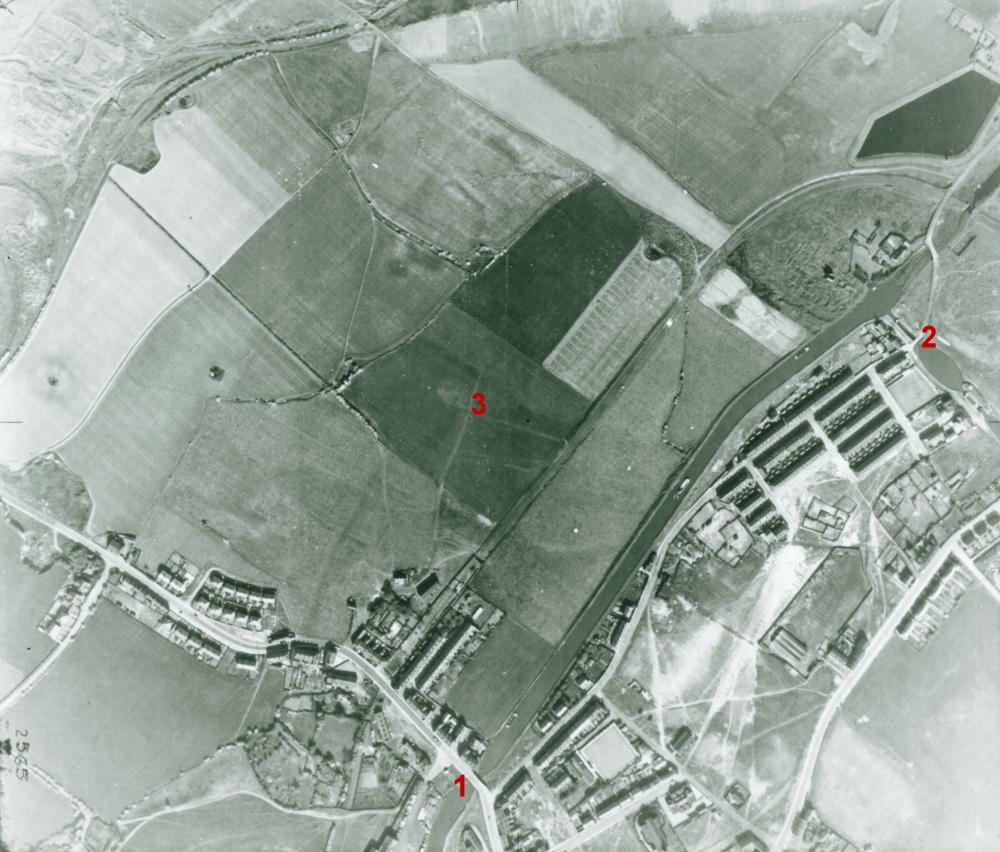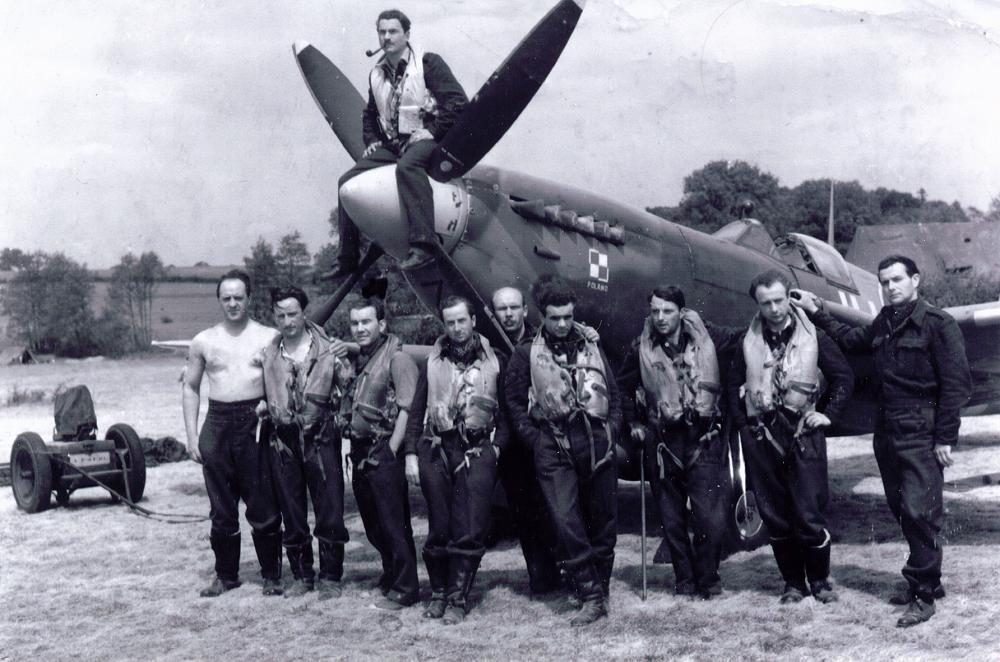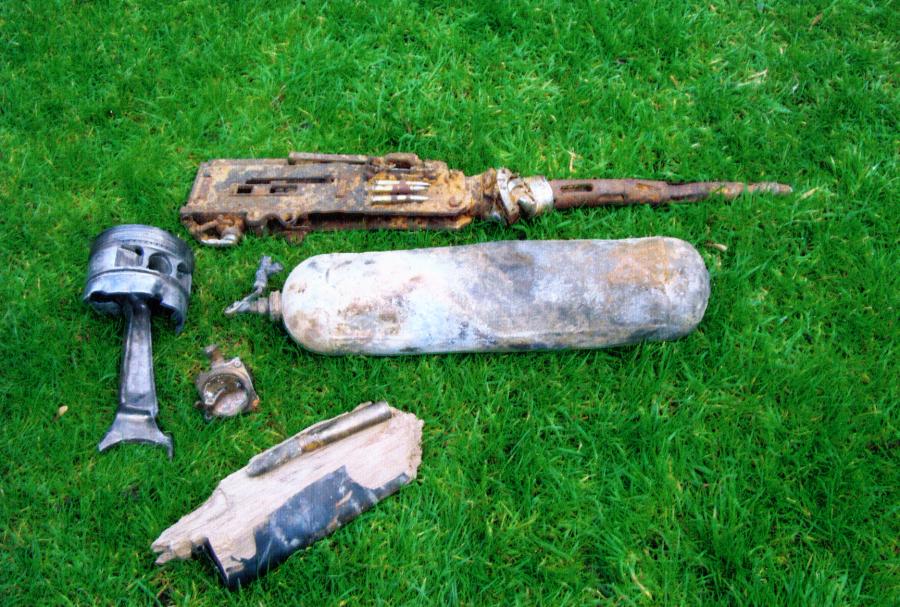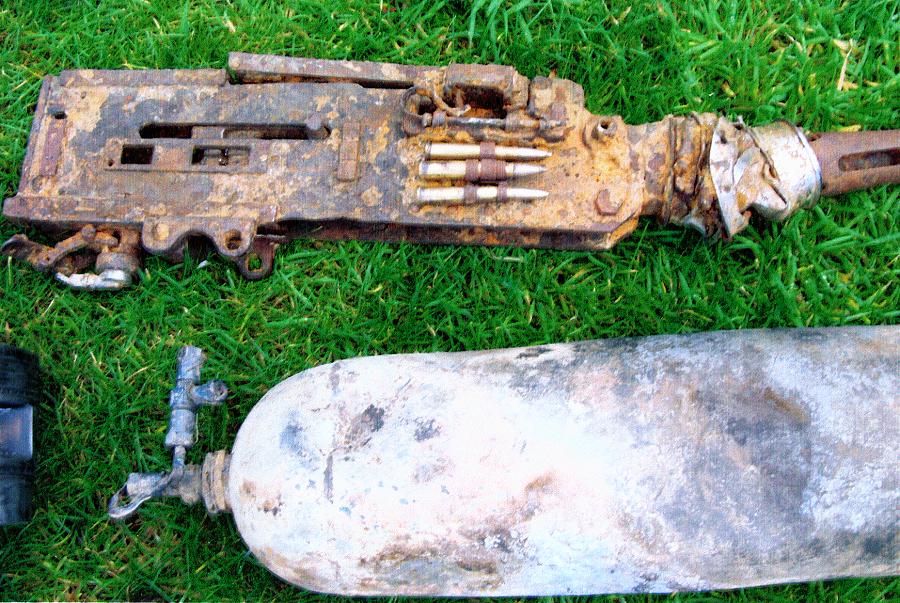Spitfire Crash in Aspull, 13th February 1942.
All material kindly supplied by Mark Gaskell of the Lancs. Aviation Investigation Team and Eric Turner, A.T.C. Wigan 723 Squadron.
The Spitfire mark Vb, serial number BL585, was with 308 (City of Krackow) Squadron, a Polish squadron in the Royal Air Force then based at RAF Woodvale near Southport. It was engaged with another Spitfire from the same squadron practising fighting and the pilot thought he became unconscious because of an oxygen failure and did not remember jumping out. He was falling without his parachute being opened. He came to, and pulled the rip-cord and his 'chute opened, he was still very high over Hindley and he came down at a colliery in the Golborne area. The plane dove into a field not far from the Top-Lock and exploded, a lot of its parts were removed by a crash team from the RAF and the rest remained buried until Mark Gaskell from Orrell researched the site. He and his friends of the Lancashire Aircraft Investigation Team dug them up in 2005.
The Polish pilot's name was Flying Officer Boleslaw Paley born on 14th September, 1915.
He was a member of the Polish Air Force from 1936 and was commissioned with the rank of Pilot Officer on the 1st September 1939 (The day Germany invaded Poland). He left Poland to carry on fighting the Germans from Romania, and then went to France to join the French Air Force, then he escaped from France to England to carry on his war against the Nazis as did thousands of his fellow countrymen.
Later, on the 7th June 1944 (6th June 1944 was D-Day) he had to abandon his Spitfire IX serial MJ310 after engine failure over the French town of Insigne, behind the invasion beaches and he remained a Prisoner of War until 7th May 1945. Flight Lieutenant Boleslaw Henryk Paley (Polish Cross of Valour), died 8th May 1996 in London.
Spitfire parts from the crash site at Aspull
The following parts were dug up at the site in 2005 (63 years later):
1. Browning machine-gun, -303 inch calibre. (1 of 4 carried on this plane) + 3 bullets for this gun, still linked together (de-activated).
2. Piston and connecting rod, from Rolls-Royce Merlin engine (V12 cylinder).
3. Piece of 3 bladed wooden propeller.
4. One of the smaller instruments. Oxygen contents gauge.
5. 20mm cannon shell in its case and one shell without case (de-activated).
6. Small makers plate.
7. Compressed air tank. Used for retracting the wheels and firing the guns.
The armament of this aircraft was 2x20mm cannon and 4x-303 inch machine guns, 60 rounds per cannon and 350 for each machine gun.



